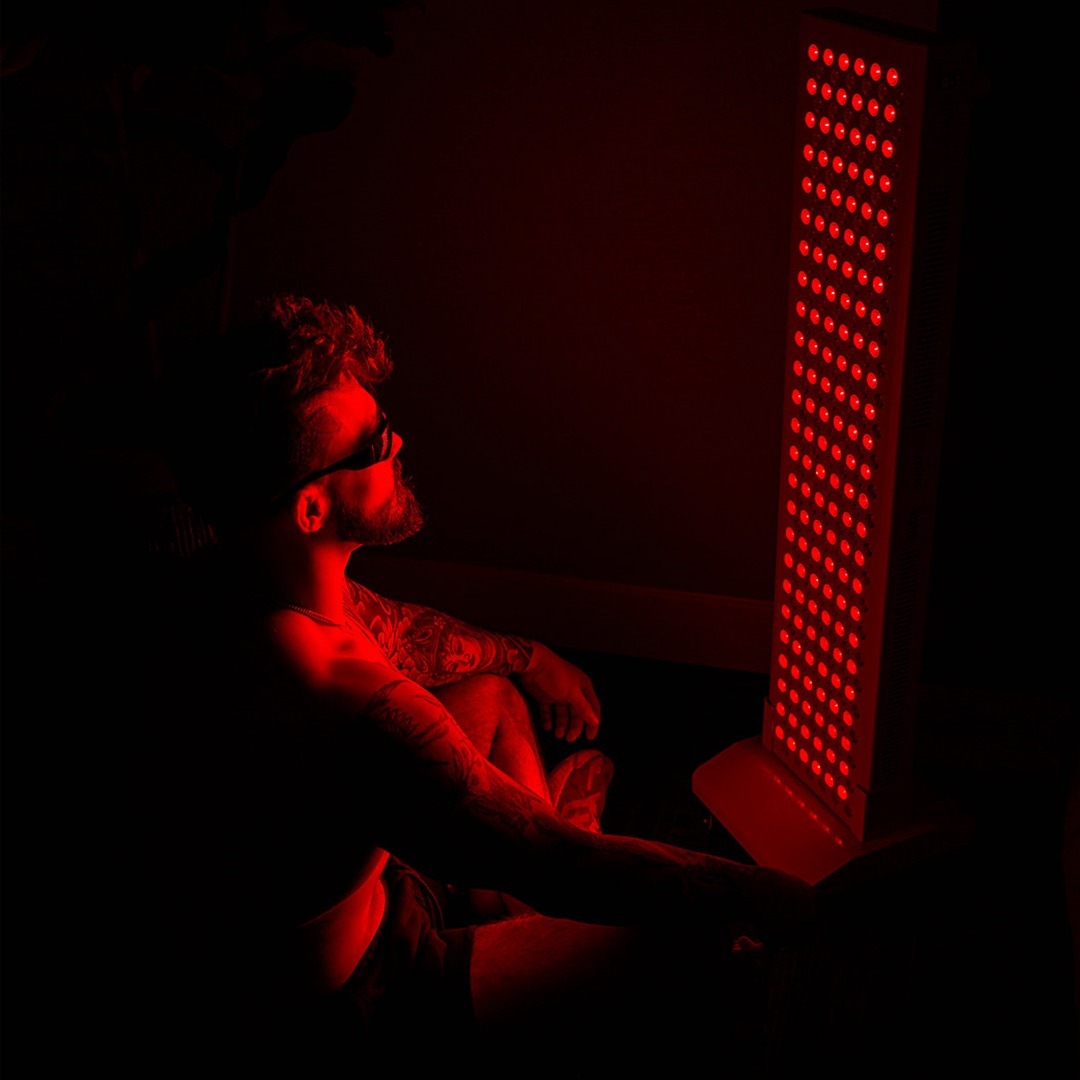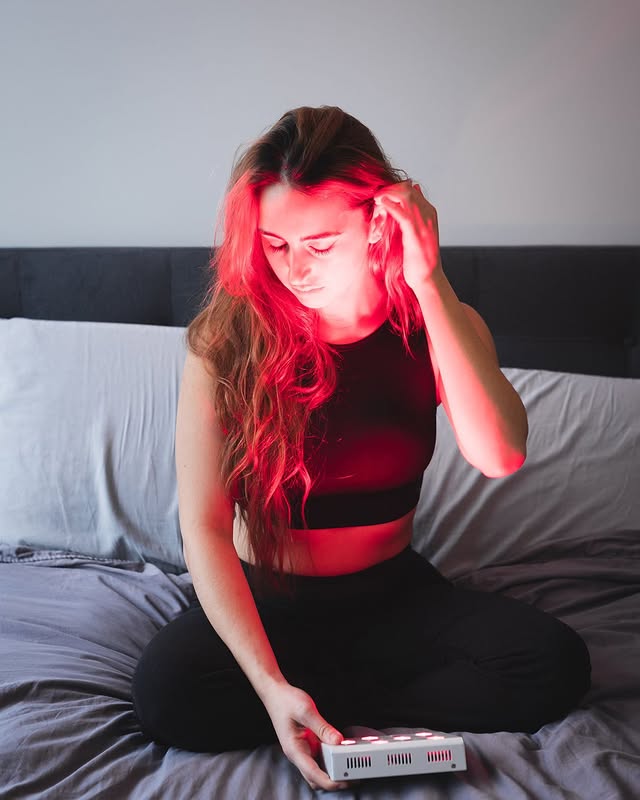![]() Free Shipping
Free Shipping ![]() Buy Now, Pay Later
Buy Now, Pay Later ![]() Eligible
Eligible
Red Light Therapy for Prostate Health: Improving Urinary Function and Reducing Inflammation

Prostate health is a critical yet often overlooked aspect of men’s wellness. Conditions like benign prostatic hyperplasia (BPH), prostatitis, and even prostate cancer can significantly impact quality of life, leading to urinary dysfunction, pain, and inflammation. While conventional treatments like medications and surgery exist, many men seek natural, non-invasive alternatives to support prostate health.
One emerging solution is red light therapy (RLT), also known as photobiomodulation (PBM). This innovative treatment uses low-wavelength red and near-infrared light to penetrate tissues, stimulating cellular repair, reducing inflammation, and improving blood flow. But can it really help with prostate issues?
In this comprehensive guide, we’ll explore:
- The science behind red light therapy and prostate health
- How RLT can improve urinary function
- Its role in reducing prostate inflammation
- Clinical studies supporting its benefits
- How to use RLT for prostate wellness
By the end, you’ll have a clear understanding of whether red light therapy could be a viable option for enhancing prostate function naturally.
Understanding Prostate Health Issues
Before diving into red light therapy, it’s essential to understand the common prostate problems men face:
1. Benign Prostatic Hyperplasia (BPH)
BPH is a non-cancerous enlargement of the prostate gland, affecting nearly 50% of men over 50 and up to 90% by age 80. Symptoms include:
- Frequent urination (especially at night)
- Weak urine stream
- Difficulty starting and stopping urination
- Incomplete bladder emptying
2. Prostatitis (Prostate Inflammation)
Prostatitis can be bacterial or non-bacterial, causing:
- Pelvic pain
- Burning during urination
- Sexual dysfunction
- Chronic discomfort
3. Prostate Cancer
While more severe, prostate cancer is treatable if detected early. Symptoms may overlap with BPH, making regular check-ups crucial.
Traditional treatments include alpha-blockers, 5-alpha-reductase inhibitors, antibiotics (for bacterial prostatitis), and surgery (for severe BPH or cancer). However, these can have side effects like dizziness, sexual dysfunction, and fatigue.
This is where red light therapy offers a promising alternative.
What is Red Light Therapy?
Red light therapy (RLT) is a non-invasive, painless treatment that uses specific wavelengths of light (630-850 nm) to penetrate skin and tissues. These wavelengths stimulate mitochondria (the powerhouse of cells), boosting ATP (energy) production, reducing oxidative stress, and enhancing cellular repair.
How Does RLT Work for the Prostate?
Since the prostate is an internal organ, you might wonder how light can reach it. Research shows that near-infrared light (NIR) at 800-850 nm can penetrate several centimeters deep, making it effective for prostate treatment.
Key mechanisms of RLT for prostate health:
- Reduces Inflammation – Light therapy decreases pro-inflammatory cytokines.
- Improves Blood Flow – Enhances circulation, aiding tissue repair.
- Stimulates Cellular Repair – Promotes healing of prostate tissues.
- Relieves Pain – Modulates nerve signals, reducing pelvic discomfort.
VELLGUS Elite V2
THE #1 RATED RED LIGHT DEVICE
VELLGUS pro V2
THE #1 RATED FULL BODY RED LIGHT DEVICE
Scientific Evidence: Red Light Therapy for Prostate Health
Several studies support RLT’s benefits for prostate conditions:
1. Red Light Therapy for BPH (Urinary Symptoms)
A 2020 study published in Photomedicine and Laser Surgery found that men with BPH who received NIR light therapy experienced:
- Improved urine flow rate
- Reduced nighttime urination
- Decreased prostate-specific antigen (PSA) levels
2. RLT for Chronic Prostatitis
A 2018 clinical trial showed that light therapy significantly reduced pain and inflammation in men with chronic prostatitis, with effects lasting months after treatment.
3. Prostate Cancer and RLT (Supportive Therapy)
While RLT is not a cure for cancer, studies suggest it may help:
- Reduce side effects of radiation therapy
- Lower inflammation in prostate tissues
How to Use Red Light Therapy for Prostate Health
1. At-Home RLT Devices
- Handheld red light panels (placed over the perineum)
- RLT belts (worn around the pelvic area)
- NIR saunas (whole-body therapy for systemic benefits)
2. Clinical Treatments
- Urology clinics offering specialized light therapy
- Laser therapy sessions with deep-penetrating NIR
Recommended Protocol:
- Wavelength: 810-850 nm (near-infrared for deep penetration)
- Duration: 10-20 minutes per session, 3-5 times per week
- Consistency: Best results seen after 4-12 weeks
Additional Prostate Health Tips
While RLT is powerful, combining it with other strategies enhances results:
- Saw Palmetto & Pygeum (natural supplements for BPH)
- Zinc & Selenium (essential minerals for prostate function)
- Regular Exercise (improves pelvic blood flow)
- Hydration & Bladder Training (reduces urinary frequency)
Conclusion: Is Red Light Therapy Worth Trying?
Red light therapy is a safe, drug-free, and scientifically supported option for improving prostate health. Whether you’re struggling with BPH, prostatitis, or post-cancer recovery, RLT may help:
✔ Reduce inflammation
✔ Improve urinary flow
✔ Enhance cellular repair
✔ Decrease pelvic pain
If you’re considering RLT, consult a urologist or functional medicine doctor to tailor a plan for your needs. With consistent use, many men experience significant relief without the side effects of medications.
Final Thought:
Prostate health shouldn’t be ignored. With advancements like red light therapy, men now have more natural, effective tools to maintain wellness and vitality at any age.
Would you try red light therapy for prostate support? Share your thoughts in the comments!








